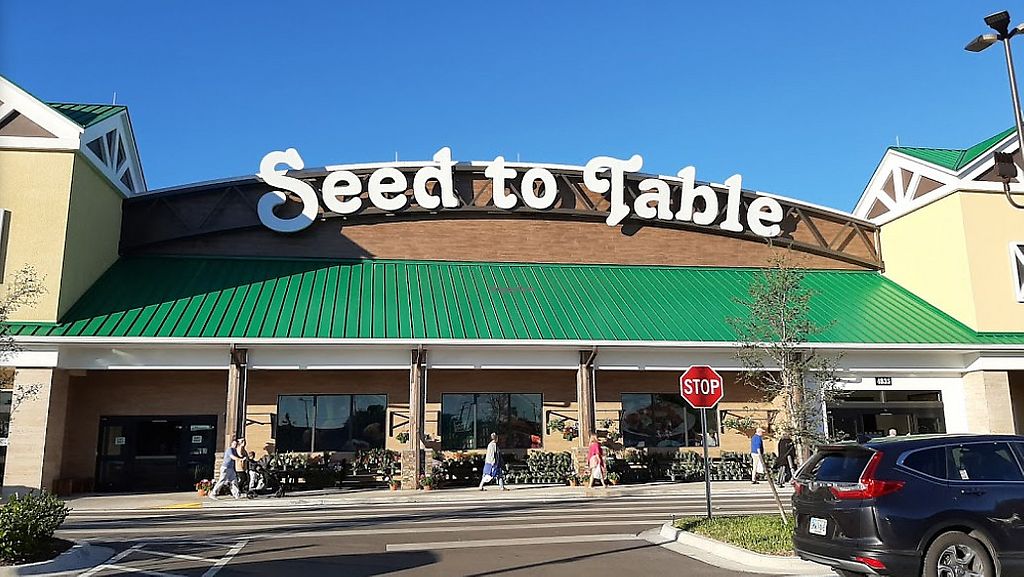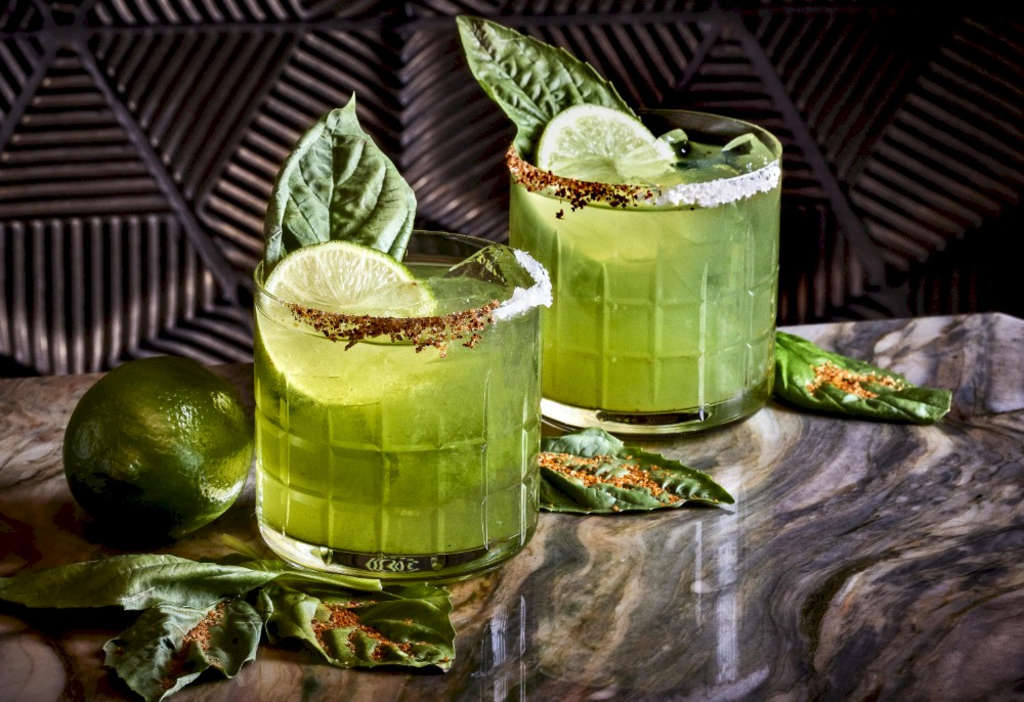Introduction
The food and beverage industry in the United States is getting increasingly competitive. Differentiation has always been one of the best ways of ensuring that a firm gains a competitive edge over its rivals in the market. However, with time a unique recipe becomes widespread and the competitive edge is lost. Maulsby (2020) explains that another major concern in the food and beverage industry is the impact that some food products have on the health of consumers. Obesity, diabetes, coronary diseases, and even cancer are some of the health problems that are directly linked to the diet of an individual.
Firms in this market have been keen on finding ways of ensuring that their food products are as healthy as possible. Kim (2019) also explains that consumers have become sensitive about the source of food items that they eat, how they are prepared, and the potential health impact that they may have. Dickinson (2021) observes that food and beverage industry has also received criticism from environmentalists who believe that it has significantly contributed to the emission of greenhouse gases. Some food items are sourced thousands of miles away from where they are consumed, and as such, transporting them leads to massive emission of carbon dioxide gases. In an effort to address this concern, a new concept known as seed-to-table has emerged. The concept not only addresses the environmental concerns but also health and nutritional concerns of the consumers. Thus, the seed-to-table concept becomes one of the leading movements in the United States’ food and beverage industry.
Seed-To-Table Concept
When a company is operating in a highly competitive business environment, its sustainability would depend on how well it meets the needs of its customers and the strategies that it uses to manage external forces. Maulsby (2020) explains that it is possible for a firm that understands and meets its customers’ needs to collapse. It happens when such an entity fails to take into consideration the other internal and external forces that would directly affect its operations. In the food and beverage industry in the United States, competition is stiff, and firms are under immense pressure to protect their market share while at the same time finding new markets.
For a long time, players in this industry focused on maintaining the cost of operation as low as possible. As such, it was okay for a firm to source for farm products from suppliers who would charge the least possible price (Kim 2019). It became a common practice to source for fruits and other food products from as far as South America, Asia, Africa, and parts of Europe. They would then be shipped thousands of miles to different parts of the country. That trend is changing rapidly with the emergence of the seed-to-table concept. Figure 1 below shows Naples Florida store that specializes on seed-to-table concept. Such stores are becoming common in various parts of the United States.

Understanding Seed-To-Table Concept
It is necessary to start by explaining the concept of seed-to-table in the food and beverage industry. Haverland (2022) defines seed-to-table concept as “the use of ingredients used in cocktails, dishes, and garnishes that are grown from an onsite garden.” In this approach, a food outlet makes deliberate steps to ensure that its ingredients are sourced from local firms. The goal is to ensure that these food items do not have to travel several miles to reach the consumer. In this concept, the ideal situation is to have the farm next to the food outlets. Food items would be taken from the farm and be made immediately available to the consumers without having to cover great distances. Trucks or any other means of transport will not be needed (Maulsby, 2020). Ideally, the farm produce would only be taken upon the demand. A fruit would be plucked and sold to the customer immediately without having to be stored for hours or days.
Genesis of the Concept
The seed-to-table concept was a demand-push idea that has been embraced by various players in the food and beverage industry. It was a demand-push idea because firms in this industry were forced to reevaluate their production strategies after massive criticism from environmentalists and the medical community. The medical community has blamed this industry for some of the health complications such as obesity, cancer, heart diseases, and diabetes among others (Dickinson 2021). A study by Kim (2019) showed that preservatives that are used to ensure that food items last longer may be associated with cancer and other medical conditions. When a fruit has to be harvested in East Africa or Southern China, transported to California, stored for some time, before they can be consumed, preservatives have to be used.
New stronger preservatives have emerged that help in ensuring that these food items last longer. The problem is that they not only affect the original taste of the food items, but also expose consumers to serious health problems (Maulsby 2020). As consumers become aware of the dangers of food items with stronger preservatives, they opt for locally produced food items. The shifting demand from preserved products to fresh produce, such as that shown in figure 2 below, is forcing firms in this industry to embrace seed-to-table concept. Customers are becoming increasingly sensitive about products that they consume. It is common to find cases where a consumer insists on a specific food item primarily because they are convinced it is beneficial to their health. The elimination of the strong preservatives also ensures that the food item retains its original taste.

Pollution has also been another factor that has pushed the creation of the concept of seed-to table in this industry. According to a report by the United States Environmental Protection Agency, about 25% of global carbon emissions come from industrial food production (Haverland 2022). Transportation of food products from one country to another and finally to consumers is responsible for most of the carbon emissions in this industry. The United States has witnessed the devastating impact of global warming and climate change. Kim (2019) observes that cases of wildfires, flooding, extended drought, and rising sea waters have been witnessed in different states across the country. They are directly associated with climate change.
Besides government efforts to fight global warming, individual citizens often feel that they also have a role to play in fighting pollution. Seed-to-table offers them the best solution to fight environmental degradation. They are convinced that if they purchase locally grown food items that do not have to be transported for long distances, they will be reducing the level of pollution, especially the emission of greenhouse gases. Figure 3 below shows the long supply chain of avocados imported from Mexico to the United States. Firms in the food and beverage industry have to respond to these changes in consumer tastes and preferences.

Trade balance is another factor that contributed to the emergence of seed-to-table concept. For a long time, the United States has been a net exporter of products. However, the amount of products being imported into the country is steadily surpassing the value of experts. In 2021 financial year, it is estimated that the United States’ imports had exceeded exports by $ 75.7 billion (Marshall 2021). If the trend is left unchecked, the trade imbalance may continue, and the country may lose competitive edge over other developed economies in the world, especially China. Seed-to-table concept is seen as one of the ways of addressing this problem. As such, this new strategy has received both state and federal government’s support.
The Growth of the Concept
Seed-to-table concept has achieved massive popularity over the past two to three years. Maulsby (2020) believes that the growth of this concept was largely pushed by the outbreak of COVID-19 pandemic. When the pandemic reached the United States, one of the sectors that were immensely affected was the food and beverage industry. There was a concern that some of the imported food items could facilitate the spread of some variants of the virus that were not in the country yet (The United Nations Conference on Trade and Development 2021). As such, many people considered locally grown food items safer. The ease of importing food items during this period of the pandemic was also affected. Many countries around the world banned exportation of some food products to meet their local demands. During this period, firms had to redefine their supplies, and the only option was to support local production of food items. More acreage of land was put under agriculture. A good example is Oakes Farms that has since put 3,500 acres on production of food products for local consumers (Seed-to-Table Market 2023). These farmlands are getting bigger because of the growing demand in the local market.
When former President Donald Trump came to power, he was committed to reducing the value of the United States’ imports, especially from China and Mexico. Mexico, alongside Canada, is the leading importer of food items in the United States (Dickinson 2021). As the relations between the US and Mexico soured, it became apparent that the local food and beverage industry had to find alternative sources of farm produce. The Trump regime made it clear that the country needed to be self-sustainable. There was a growing concern that some of the food items that are imported could easily be grown locally. Leading grocery stores and major food outlets preferred importing these products because doing so would be cheaper. With new government regulations, it became evident that players in the industry would have to redefine their supply chain. It led to a further growth of the seed-to-table concept.
Changing tastes and preferences of consumers in the local market is another major factor that has led to the growth of this concept. According to Kim (2019), the health-conscious Americans are currently keen on monitoring the entire supply chain of the items they consume. In the past, consumers had developed the need to see how their meals are prepared, especially after the infamous ‘Dirty Dominos’ Pizza’ video that showed employees preparing a pizza in a very unhygienic manner and then serving unsuspecting clients (Clinehens 2020). People no longer trusted the hygiene of meals prepared in closed kitchen. It led to the emergence of open kitchen plan, such as the one shown in figure 3 below, where customers could easily see how their meals are prepared.
The same consumers have become even more sensitive when purchasing food items. Because of health concerns, especially the increasing cases of cancer, obesity, diabetes, and other lifestyle diseases, they now want to understand how firms in the food and beverage industry source for their raw materials. It may not be possible for these companies to accurately explain how the food items are produced in foreign countries. However, when they are grown in local farms and gardens, firms in this industry can provide the explanation that consumers need. They can easily visit these farms and confirm that standard practices such as the use of specific pesticides and herbicides are used. They can get the assurance that the item that they are consuming is safe.

Cost is emerging as another factor that is promoting the growth of seed-to-table concepts. Some of the restaurants in the United States are finding it cheaper to source tomatoes, vegetables, fruits, and many other food items from local farms than importing from other countries. Maulsby (2020) attributes this changing trend to the increasing population of immigrants in the United States who are willing to work in the agricultural sector. Some firms such as Oakes Farms consider vertical integration as the best approach of achieving competitive edge in the market. It involves moving beyond the retail, into farming of the produce and making the products available. These companies have their own farmland where they produce a variety of farm produce, use their transport system to deliver the products, and then sell them in their stores.
The need to control the supply chain has also played a part in the growth of seed-to-table concept in the United States. Kim (2019) explains that there are cases where a firm would be inconvenienced when it comes to the delivery of the needed raw materials in time. When a grocery store or a restaurant relies on avocados from Mexico or fruits from another continent, several things can cause the delay. Poor weather conditions in the source country, challenges in transportation, accidents when goods are on transit, theft, attack by criminal elements, instances where food items expire before they reach destination, and numerous processing at the port authorities when conducting inspection of the imports are some of the possible causes of delays. When these products are sourced locally, most of these issues will be addressed and consumers will be guaranteed of access to products that they need in time and in the right quality and quantity.
Challenges That the Concept Faces
The concept of seed-to-table presents various challenges that need to be addressed for it to be a success. One of the issues that will need the attention of the stakeholders is cost. According to Maulsby (2020), it is significantly cheaper to import some of the food products than to have them grown locally. The increasing minimum wages set by the government means that those who work on these farms have to get a specific salary. The attention that some of these farms produce require would force the owners of these plantations to have a high number of workers. The high costs of production will have to be passed on to the consumers (Dickinson 2021). When presented with the alternative of an imported product that is cheaper, it is possible that these consumers will purchase the cheaper products.
The younger generation in the United States is avoiding the work in the agricultural sector. Kim (2019) notes that the younger generation considers the industry as being physically demanding but with few opportunities to achieve rapid growth. Among traditional farmers in the rural parts of the country, it is becoming common for the young graduates to move to major cities in search of white-color jobs relevant to their college training. There is the fear that if the trend continues, there will be few Americans who will be engaged in the sector. It is a major threat to the sustainability of the industry. There is a need to introduce incentives that will motivate the locals to engage in agricultural activities. The government should also ensure that they support mechanization and automation of farm activities to address the concern that activities in this sector are physically demanding. Direct financial support to these farmers may also motivate them.
The practicality of this concept is often put into question in some parts of the country. There are some parts of the country that do not support agriculture because of prolonged cases of drought or flooding (Maulsby 2020). Other parts of the country are so urbanized that there is no adequate land for agriculture. Some of the popular farm products cannot be cultivated in the country or parts of the country because of the kind of the climate that they need. In such cases, it becomes necessary to import the needed products from other countries or one state to the next. The seed-to-table concept can only be realized if food items do not have to be transported long distances. It eliminates the need to refrigerate these food items or use preservatives. When a food item has to be transported from the state of Texas to New York, the distance that has to be covered is so long that refrigeration and the use of preservatives may be unavoidable. Although the food item is not important, the concept of seed-to-table will be defeated.
Conclusion
The seed-to-table concept has gained rapid popularity over the recent past. Consumers are becoming sensitive about how food items sold to them are sourced. As such, leading grocery stores, hotels, and restaurants are opting to produce fruits, vegetables, and dairy products locally. Some of these companies have their grocery stores and restaurants located strategically next to their farms. The goal is to ensure that fruits, vegetables, dairy products, and poultry are made available to consumers a few hours after taking them from farm. It eliminates the need to use preservatives, which are associated with diseases such as cancer. Consumers are guaranteed of fresh and healthy products that meet their needs. The coronavirus pandemic, growing trade deficit in the US, growing health and environmental concerns, and foreign policies of the previous regime, are some of the factors that have facilitated the growth of the concept. The study has identified some threats such as drought and inability to grow some crops in some parts of the country as the main threats to this concept.
References
Cho, Kimin. 2020. “Environmental Impacts of the U.S.-Mexico Avocado Supply Chain.” Masters’ diss., University of Michigan.
Clinehens, Jennifer. 2020. Choice Hacking: How to Use Psychology and Behavioral Science to Create an Experience That Sings. New York: Cengage.
Dickinson, Becky. 2021. Gardening to Eat: Connecting People and Plants. New York: White Owl.
Fabris, Peter. 2019. “Form plus Function: Open Kitchens in Restaurant Design.” Restaurant Development + Design. Accessed January 19, 2023. Web.
Haverland, Adam. 2022. “What is Seed-To-Table Dining and How Is It Shaping the Food and Beverage Industry?” Hospitality Net. Web.
Kim, Cali. 2019. Organic Gardening for Everyone: Homegrown Vegetables Made Easy. Beverly: Cool Springs Press.
Marshall, Jonathan. 2021. To Have And Have Not: Southeast Asian Raw Materials and the Origins of the Pacific War. Berkeley: University of California Press.
Maulsby, Maulsby. 2020. Iowa Agriculture: A History of Farming Family and Food. Oklahoma City: American Palate.
Mshelene, Vegan. 2020. “Seed to Table Market.” Happy Cow. Web.
Seed-to-Table Market. 2023. “Welcome to the Happiest Place in the Universe.” Seed-to-Table Market. Web.
The United Nations Conference on Trade and Development. (2021). Impact of the Covid-19 Pandemic on Trade and Development: Transitioning To a New Normal. Geneva: United Nations.